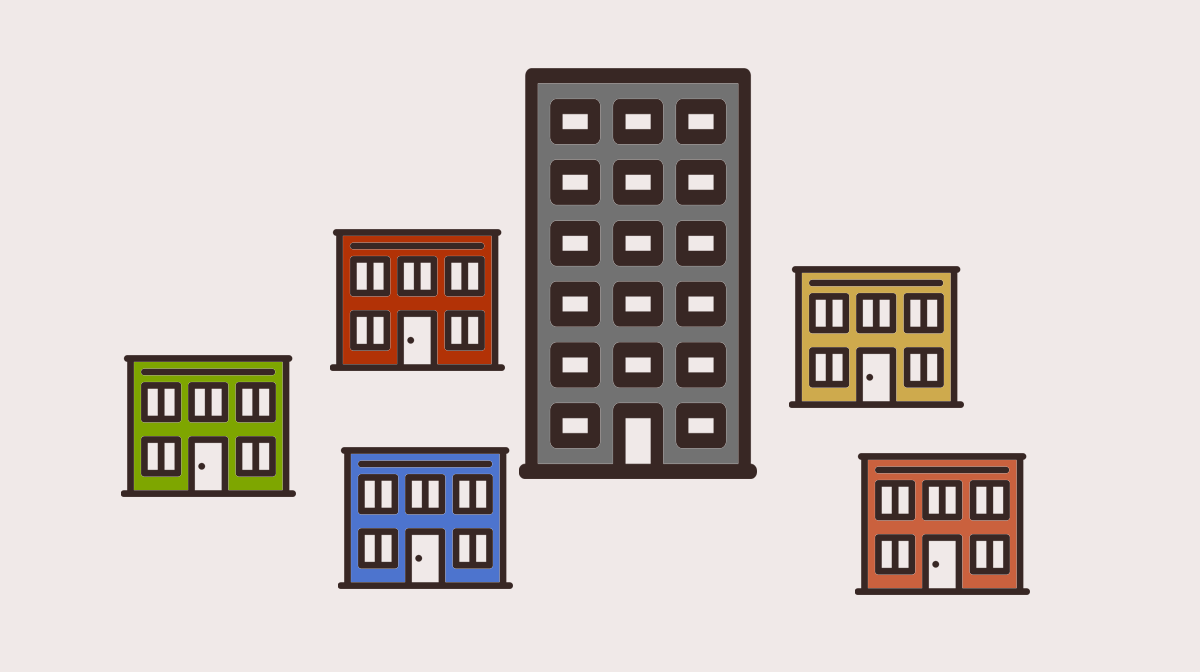So Valentine's Day is around the corner. I figured this is as good of a time as any to address a major part of life in high density urban environments that we haven't really touched on yet. I should preface this with a warning that this article is probably NSFW for some readers. Continue reading How to Get On With Life When Your Neighbors Get it On Too Much
Immigration Could Be Your Apartment’s Achilles Heel
When I worked for a local property management company here in Chicago we had a staff of about 25 people. 5 of us worked in the office or as supervisors. The rest were all maintenance workers. I'm not sure how many of our crew were citizens and how many were undocumented, but I know that out of the whole company only four of us were born and raised in the US. This sort of staffing scenario was not uncommon among the other companies working at our level.
Renters in Chicago will find it very rare to encounter a maintenance worker at their apartment building without an accent. Most of those working in property maintenance who were born & raised in the US are approaching retirement age. Residential rental maintenance relies heavily on the immigrant population - a population that is now under intense scrutiny from the federal government.
Our crew worked 10-12 hour days. I'm not sure how much they were paid but I'm sure for most of them it was below minimum wage. On the last day of the month and the first day of the month those 12 hour days could stretch to 16 or more as they tried frantically to turnover huge number of apartments between renters across our many buildings. On some months those 20 guys would flip 80 apartments or more in two days, painting, patching and cleaning them, hauling out broken fridges, replacing toilets, re-tiling bathrooms. These days, 7 years after I left, many of them are still working there.
Out of curiosity I did some digging to see how Chicago's apartments might be affected by increased crackdowns on undocumented immigrants. I used the US Census Bureau's 5-year ACS data from 2006-2010 (Charts EEO-ALL01R and EEO-CIT02R if you want to play along at home), along with recent unemployment statistics for the Chicago area from the US Bureau of Labor Statistics. Now it is important to remember that the Census statistics only count Citizens and Non-Citizens in each occupation. They do not draw distinctions between immigrants with work visas and undocumented immigrants. Continue reading Immigration Could Be Your Apartment’s Achilles Heel
Published by
Alternative Truth, Propaganda and Real Estate
The term "alternative truth" has seen a lot of use in the media lately as a way to describe information put forth as true by the White House Administration despite considerable photographic and financial evidence to the contrary. The techniques of spinning the truth, downplaying negative facts in favor of positive ones and outright lying to sell an idea or object to the public are not new. Top performers in a wide variety of professions use "alternative truth" every day to make a ton of cash.
But this is, of course, a blog about real estate: the profession that makes it legal to exaggerate, spin the truth and obscure the facts. For a real estate agent, a tiny sliver of pond becomes a "waterfront view" and a house that's about to collapse into the ground is "fixer upper in need of some TLC." It's called "puffing" and it is actually legal. The National Association of Realtors (NAR) bans puffing in the Code of Ethics that governs its members, but your average rental agent in Chicago is not a member of NAR and not bound by their Code.
Today we're going to take apart some of the techniques used by leasing agents to guide your housing decisions. Not all of them are used to mislead or deceive you: sometimes an agent could be using propaganda to keep you from making a dangerous choice. However, when you see an agent laying it on too thick or using psychological shenanigans to distract you from major problems, we think you'll be grateful for this crash course in real estate "alternative truth." Continue reading Alternative Truth, Propaganda and Real Estate
Published by
Don’t Get Stuck Carrying Prior Tenants’ Baggage! Protect Yourself With This Guide.
When something breaks in your apartment and it isn't your fault, who is to blame: the landlord who didn't fix it before you moved in, or the tenants who came before you and broke it in the first place? After all, the prior tenants have certainly spent more time in the space than your landlord has. In a best case scenario the landlord might have had a month to make repairs between occupants. In a more normal situation, he or she had a few hours to put on a fresh coat of paint and do some basic cleaning.
Given the average age of rental housing in Chicago, you're probably not the first occupant. Sometimes when tenants move out they may take all their belongings but leave behind their baggage. Landlords are under no obligation to tell you anything about prior residents, and you may not be able to dig up anything about them. Even so you need to protect yourself from any problems they may have created. Today we'll be going over some preventive measures you can take to minimize potential risks left behind from those who lived there before you, and talking a bit about how to respond to unexpected consequences of prior tenants' behavior. Continue reading Don’t Get Stuck Carrying Prior Tenants’ Baggage! Protect Yourself With This Guide.
Published by
The Rarest and Most Common Chicago Apartments
When most outsiders think of living in Chicago rentals they think of skyscrapers with sleek elevators and revolving doors, lakefront views and rooftop decks. But all it takes is a glance at the city with Google Maps in satellite view to show you that most of the city is not chock-a-block with 80-story structures. Newcomers to the city may get a little culture shock when they realize that their new rental housing will probably be in a short, squat walk-up constructed over a century ago.
To save those moving to town from a little disappointment, we decided to take a look at what the statistics have to say about the average Chicago rental housing. We paid a visit to our favorite source of statistical data, the American Fact Finder provided by the Census Bureau, which we hope will be one of the few sites to survive the coming change of federal government relatively intact.
The Norm
According to the American Housing Survey last conducted in 2013, the average Chicago renter lives in a building that is 2-3 stories tall (72.5%). It has 2-4 units (29.5%) and was constructed either between 1950-1969 (24.8%) or prior to 1920 (24.3%), with a median construction date of 1961. It's a walk-up building (72.1%) with no elevator (61.0%). Their apartment is at least 2 stories off the ground (50.5%). Continue reading The Rarest and Most Common Chicago Apartments






